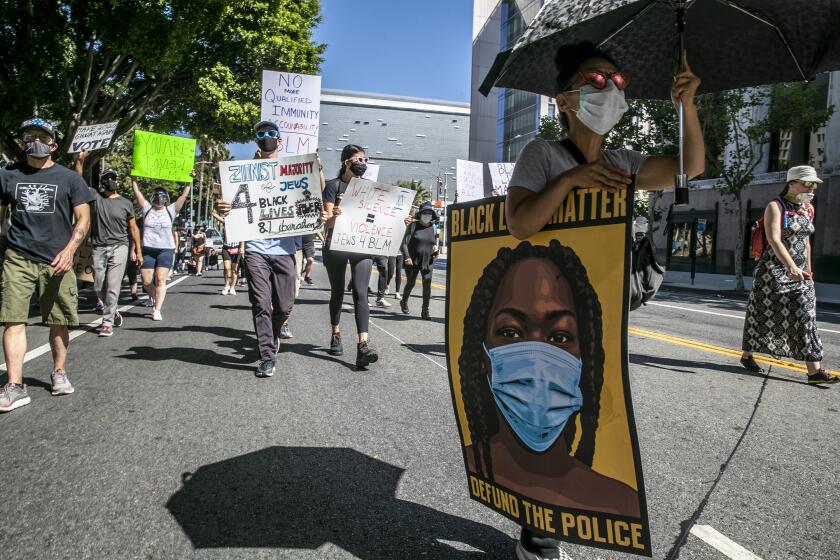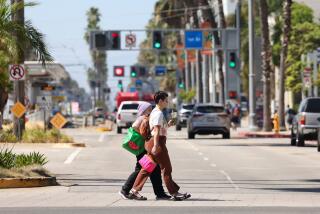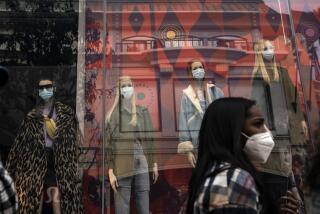My research team makes COVID-19 death projections. Here’s why our forecasts often change

- Share via
As of this week, more than 208,000 people are projected to die of COVID-19 in the U.S. by November. That supersedes an earlier forecast of more than 179,000 deaths by October.
Both of those projections were made by the University of Washington’s Institute for Health Metrics and Evaluation, which I oversee. Since the White House coronavirus task force began releasing our forecasts in late March, we’ve received a great deal of attention — not all of it good, since many people do not understand how modeling works.
Over the last few months, our projections have risen, fallen and risen again. Such unpredictability, as well as rapid evolution, are essential elements of the process in projecting the course of a new disease. As the pandemic unfolds, more information becomes available — how many people are moving around, who is and isn’t wearing masks — and our modeling evolves with that data.
Our modeling started as an exercise in forecasting resource needs for the University of Washington’s hospital system. It has evolved into COVID-19 projections for all U.S. states and nearly every country.
It is based on several factors, including attributes of the virus, actions of government in mandating social distancing, expanded testing, mask-wearing, and mobility as measured through cellphones. Predicting deaths is not a pleasant part of the job, but it is necessary to informing decisions that secure and allocate resources for fighting the virus. More than 133,000 people in the U.S. have died from COVID-19 so far.
A rapidly changing understanding of the pandemic and equally rapid and varied response have fueled three evolutions in our model since late March.
IHME’s initial modeling utilized data from Wuhan, China, along with Italy and Spain, the only information then available. That information showed a predictable relationship between the imposition of social-distancing mandates and the peak in deaths and hospitalizations. That relationship was used to create our first projections, predicting that the peak in deaths across the U.S. would be April 15. The actual peak was April 16.
However, peak cases and peak deaths in the U.S., and particularly in New York City, lingered at disturbingly high rates. The long, slow decline in the U.S. and Europe, which our first model did not predict, led to our first forecasting model update.
IHME’s second-generation model incorporated a traditional infectious-disease approach centered on people who are susceptible, exposed, infected and recovered. We integrated this with our original model and leveraged increasing amounts of data on people’s mobility, as well as testing per capita, population density, and outdoor temperature.
We recently deployed our third model and just used it to extend our forecast to November. The model expands the set of predictors, including mask use, air pollution, smoking, altitude and the likely correlation between past patterns of pneumonia deaths by week of the year and COVID-19 deaths. It has just been updated to feature three projection scenarios: one based on continuing relaxation of social-distancing mandates, one in which 95% of the public wears masks, and one based on previous observations that assume governments will reimpose social-distancing mandates when 8 people per million die each day.
Moreover, IHME intends to add another important variable to this new model: race. As we examine the differential impacts of the disease by race, we will pay particular attention to Black Americans, who are nearly three times as likely to die from the disease as white people, according to one report.
The ongoing evolution of IHME’s forecasting does not make our modeling less valuable. Rather, it underscores the value of a data-driven approach and one that continues to be refined as the pandemic unfolds.
Bars, parties and other small-scale gatherings may be more to blame for the virus’ spread than the massive outdoor protests triggered by George Floyd’s death.
Forecasts require predictions of how both governments and individuals adapt to the pandemic — an inherently challenging task. We’ve been labeled as pessimists by people who point to our forecasts as a cause of our devastated economy, and as optimists by those who believe our forecasts justified a weaker-than-necessary response by federal, state and local governments.
Neither applies. We are pursuing the most accurate forecasts possible.
A model should change as frequently as new data emerge and as new insights from key drivers of change appear. Early on, mobility as measured by cellphones was highly predictive of disease transmission, but by May mobility was not as strong a predictor. This seeming paradox may be attributable to individuals wearing masks as mobility increased, a pattern now being disrupted by “virus fatigue” and large-scale, mask-free summer gatherings.
Based on historical data for pneumonia cases and deaths, together with what appears to be a correlation between COVID-19 infection levels and pneumonia seasonality, our model suggested that transmission in the U.S. would go down in the summer through mid-August. But recent events seem to have negated that potential benefit.
Subsequent colder weather implies even greater transmission from mid-August through early February. With schools in many states planning to open, and with potentially reduced personal vigilance, a second wave this fall is highly likely.
Modeling will continue to be important in helping hospitals plan for another surge. It can also inform officials who must make difficult choices about investing in testing, tracing and isolation, and even tougher decisions about whether once again to shut down some businesses and schools. Groups and individuals may also look to models to guide their opinions — and behavior — regarding wearing masks and maintaining safe distances.
Models should reflect the best data and science available on any given day. As we learn more going forward, one aspect will remain constant: You can expect projections to change.
Dr. Christopher J.L. Murray is the director of the Institute for Health Metrics and Evaluation and a professor of health metrics sciences at the University of Washington.
More to Read
A cure for the common opinion
Get thought-provoking perspectives with our weekly newsletter.
You may occasionally receive promotional content from the Los Angeles Times.










